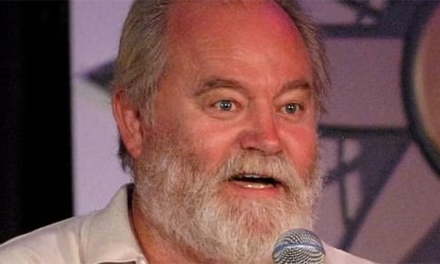Richard Halliwell, the prolific game designer for UK’s Games Workshop and co-designer of the popular Warhammer fantasy tabletop wargame, has passed away.
Born March 29, 1959, he was 62. No cause of death has been released.

Halliwell, or ‘Hal’ as he was known, co-designed the game in 1983 alongside Rick Priestly and Bryan Ansell. Warhammer The Mass Combat Fantasy Role-Playing Game, later to be called Warhammer Fantasy Battle or simply, WHFB, was based on Halliwell’s earlier miniatures game known as Reaper which he first co-wrote with Priestly in 1978. The trio could be considered to be the UK’s equivalent of Gary Gygax and Dave Arneson, who created the Dungeons and Dragons role-playing game nine years earlier. Like Arneson, his fame was a fraction of that of his partners’, but he left an indelible mark on fantasy and scifi gaming that exists do this day, extending into many online games derived from his work.
Reaper was originally conceived from a fantasy campaign that Halliwell ran. He had previously published a set of rules in a fantasy wargamer fanzine – which would make him the creator of the first set of British fantasy wargaming rules, according to Priestly. The two had stumbled across an early version of Dungeons & Dragons in the mid-70s and set about creating their own game that “wasn’t as rules heavy.” Halliwell, who was still attending Nottingham University in 1977 did some of the production work on the ruleset and coordinating with a miniature company known as Asgard, which was supporting the effort. He also oversaw the publication of the rules, which despite being intended as a minimalist ruleset, was supposedly the longest list of British rules to date, according to Priestly.
Reaper brought the duo to the attention of Bryan Ansell who founded Games Workshop and brought first Halliwell and then Priestly onboard. Halliwell initially handled the company’s mail order, but he and Priestly were soon tasked with creation of the Warhammer rules by Ansell, who wanted to sell miniatures “by the regiment” rather than one at a time, as with D&D. Halliwell is credited with creating the basic rule mechanics and wrote the first draft. Because of the scarcity of polyhedral dice at the time, the combat and saving rolls were all done using standard d6 (cube) dice, a mechanic that is still used today.

WHFB, now in its 9th Edition, along with the later, scifi version Warhammer 40,000 (aka WH40K), are the core game products of the UK’s Games Workshop, one of the dominant miniatures game manufacturers. It includes many of Halliwell’s original ideas including the combat mechanics as well as races like the Slann and the land of Lustria. In addition to his work on the 1st and 2nd editions of WHFB, Halliwell created other popular games, including some that extended beyond the company’s fantasy and scifi settings. Games Workshop, or GW as it is known, licensed the popular comic series Judge Dredd and Rogue Trooper during the 80s and in 1987 Halliwell created two board games based on those properties; Block Mania and Rogue Trooper which used miniatures produced by Citadel, GW’s miniature product line. Halliwell’s other credits include Combat 3000 (1979), Imperial Commander (1981).
In 1987 was a busy year for Halliwell. He wrote a supplement for WHFB called Ravening Hordes, a list of armies for players to build using Citadel miniatures. The product had the desired effect of greatly increasing the company’s sales of miniatures. He also was deeply involved in the creation of the third edition of the core WHFB ruleset, which many consider to be the best, or at least most classic, version of the rules. Also that year, GWthe cult-classic automotive combat game Dark Future (1988) which was set in the hellish wastelands of America in the 1990s with players’ factions duking it out in armed and armored vehicles to win scarce resources. Supplements were published in GW’s White Dwarf magazine over the next two years, with an expansion released in 1989. Also in 1989, Halliwell’s Slaughter Margin was a return to the dystopic Judge Dredd world of MegaCity One in the form of a boardgame.
Later that year, GW published Halliwell’s most wildly popular game – a skirmish game set in the WH40K universe, known as Space Hulk. Space Hulk featured small squads of heavily armored, genetically altered human Space Marines fighting their way through the rusted wreckage of ancient starships to exterminate the alien infestation threatening to take over Imperial worlds. The original version is much in demand by gamers to the point that a new edition was published a few years back and a version of the game is available on Steam.
After leaving GW at the turn of the century, Halliwell’s luck took a turn for the worse, including being robbed in Thailand, and later “roughed up” by the Thai police during one of a series of motorcycle road tours. During his travels, his bank account had been drained and his house repossessed, but he was seemingly on his road to recovery and working on a “hypothetical WW2 game” in 2010. After that, he largely dropped out of site.
-30-
![]()












You must be logged in to post a comment.